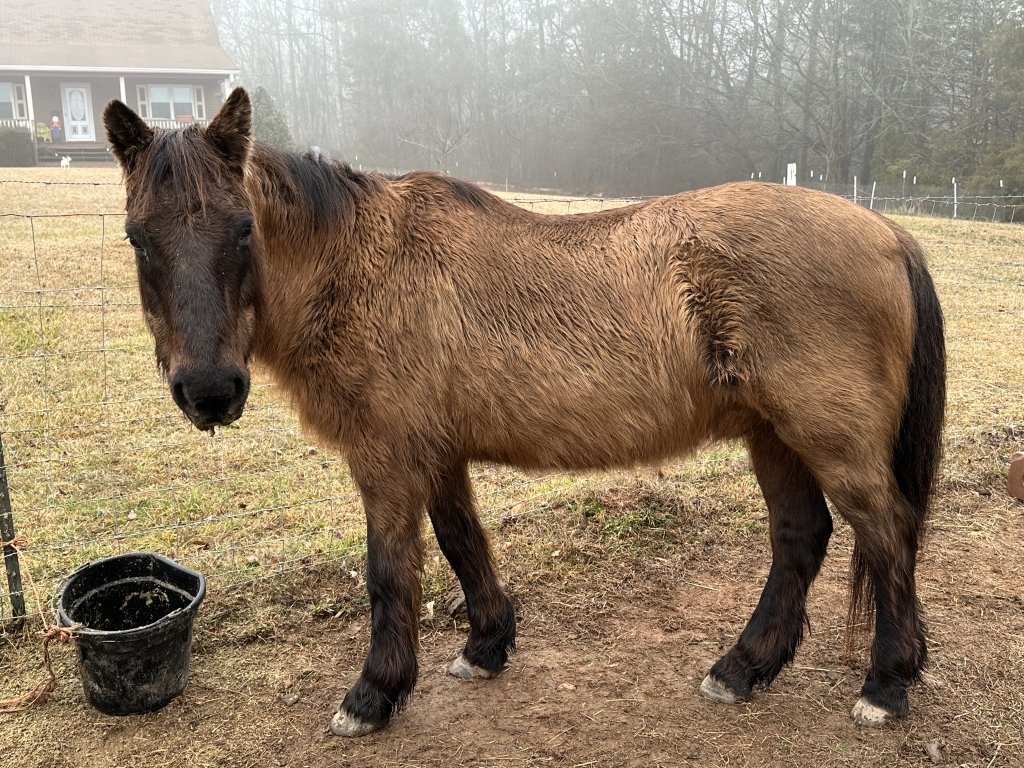
Advances In Endocrinology Take Centre Stage In Latest EVJ
The endocrine system plays an essential role in balancing the horse’s health on a day-to-day basis but unfortunately, it’s prone to malfunction. The March issue of the Equine Veterinary Journal (EVJ) showcases the latest work that is significantly advancing veterinary understanding of equine endocrinology, including the BEVA Primary Care Clinical Guidelines on the diagnosis and management of equine pituitary pars intermedia dysfunction (PPID).
The March issue is available here.
“Knowledge, diagnosis and treatment of equine endocrinopathies has improved dramatically over the past 25 years, with progress driven by the publication of peer-reviewed papers and the application of evidence-based medicine,” said EVJ guest editor Melody de Laat. “This substantial collection of novel articles and evidence and narrative reviews highlights the EVJ's important contribution to this continuously developing field.”
The 16 papers published in the collection were the result of a call for papers on equine endocrinology. Submissions underwent the EVJ's usual peer review process led by guest editors Melody de Laat, Kelsey Hart and Nicola Menzies-Gow.
PPID is a common progressive, age-related neurodegenerative disorder affecting horses and ponies of all breeds.
· The BEVA Primary Care Clinical Guidelines provide evidence-based recommendations for the diagnosis and management of PPID, directed at equine practitioners in an ambulatory setting. The evidence review supports clinical signs such as hyperhidrosis, regional adiposity, epaxial muscle atrophy, laminitis, weight loss, recurrent infections or delayed healing, behaviour changes, or polyuria and polydipsia as prompts for moderate suspicion of PPID in animals of more than 10 years of age.
o From a diagnostic perspective the evidence review supports the assessment of basal plasma ACTH concentrations or ACTH responses to exogenous thyrotropin-releasing hormone (TRH) administration.
o In terms of treatment the evidence review supports the use of pergolide as a therapy for PPID.
o Key findings from this work have been summarised in a series of four infographics which vets can use to remind themselves of the up-to-date information on diagnosis and management of PPID and as a simple tool to share with horse owners.
· Lumbar vertebral bone density is decreased in horses with pituitary pars intermedia dysfunction explores the infrequent finding of pathological fractures in aged horses with advanced PPID.
· Influence of feeding and other factors on adrenocorticotropin concentration and thyrotropin-releasing hormone stimulation test in horses and ponies and Clinical implications of imprecise sampling time for 10- and 30-minute thyrotropin-releasing hormone stimulation tests in horses stresses the importance of exact timing when these samples are collected.
Obesity is recognised as a significant health risk for horses and ponies.
· Obesity and obesity-associated metabolic disease conditions in Connemara ponies in Ireland showed a 50% prevalence of laminitis in obese ponies.
· Development of a body condition index to estimate adiposity in ponies and horses from morphometric measurements presents an alternative method for measuring adiposity.
Insulin dysregulation (ID) is a term that includes a high basal or ‘resting’ insulin (in the blood), an exaggerated insulin response to consuming starch and/ or sugar and tissue insulin resistance (a failure of cells to respond to insulin).
· Associations between feeding and glucagon-like peptide-2 in healthy ponies looks at the role of glucagon-like peptide-2 in the development of hyperinsulinaemia in ID.
· Expression of the GCG gene and secretion of active glucagon-like peptide-1 varies along the length of intestinal tract in horses demonstrates that both the large and small intestines are sites of equine GLP-1 secretion and that the genetic coding is identical in horses with and without ID.
· Relationships between total adiponectin concentrations and obesity in native-breed ponies in England and Short-term induced hyperinsulinaemia and dexamethasone challenge do not affect circulating total adiponectin concentrations in insulin-sensitive ponies show that total adiponectin is not as strongly correlated with body condition, body shape and breed as expected and inducing short-term ID does not alter total adiponectin concentrations.
· Factors associated with insulin responses to oral sugars in a mixed-breed cohort of ponies and Epidemiological investigation of insulin dysregulation in Shetland and Welsh ponies in Australia determine that the insulin response to oral sugar is associated with multiple variables but cannot be predicted from the physical appearance.
· Insulin, but not adiponectin, is detectable in equine saliva using an automated, commercial assay in a pilot study in the UK demonstrates that insulin is measurable in equine saliva, but this method is not currently a viable alternative to blood.
· The effect of pre-dosing with metformin on the insulin response to oral sugar in insulin-dysregulated horsesshows the lack of efficacy of metformin (dosed at 30 mg/kg) on the insulin response to an oral sugar test.
Corticosteroid use exogenously, has been previously anecdotally associated with an increased risk of laminitis.
· Intra-articular trimacinolone acetonide injection results in increases in systemic insulin and glucose concentrations in horses without insulin dysregulation shows that intra-articular triamcinolone does not result in circulating insulin concentrations likely to induce laminitis in insulin-sensitive animals.
Thyroid disorders include benign tumours in older horses and more rarely hypothyroidism or hyperthyroidism in adult horses, but hypothyroidism is commonly misdiagnosed.
· Diagnosis and management of thyroid disorders and thyroid hormone supplementation in adult horses and foals reviews thyroid gland pathophysiology in adult horses and foals, blood thyroid hormone concentrations and the use of T4 supplementation in equine practice.
“This robust collection reflects the continual dedication of equine veterinary researchers to developing our understanding of equine endocrinology,” said Professor Celia Marr, Editor of the EVJ. “Such work is enabling the application of evidence-based medicine to improve the diagnosis, management, treatment and quality of life of animals with endocrine disorders.”
More from BEVA

 2 years ago
2 years ago  967 views
967 views
